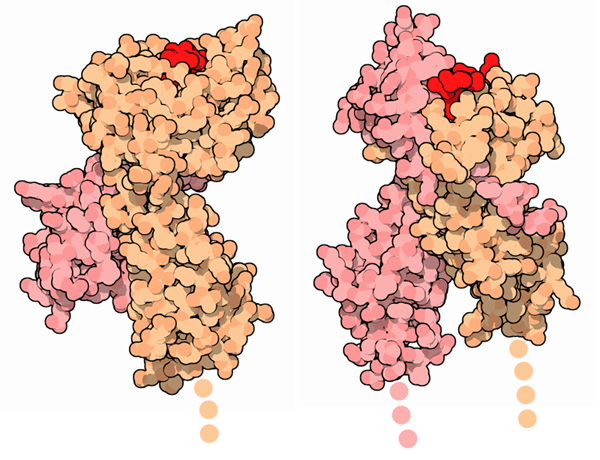|
Inhaltsübersicht | Nanomaschinen | Moleküle | Programme | Kurse | Fun | Links |
||
| > |
Major Histocompatibility Complex

Types and Terminology
Two major types of MHC are used in your body. Class I MHC, discussed on the first page, is found on the surface of most cells, where it protects us from viral infection. An example is shown on the left, from PDB entry 1hsa. Class II MHC, on the other hand, is found in specialized antigen-presenting cells that have the job of picking up proteins around the body and stimulating the immune system when they find a strange peptide to display. Like class I MHC, class II MHC is found tethered to the cell surface and it has a pocket that displays small peptides. It is different, however, in a few details. Both chains of class II MHC have portions that cross the membrane and the binding site is formed in a groove between the two chains. An example is shown here on the right from PDB entry 1dlh. As is often the case in science, there is also some terminology to watch out for: human MHC molecules are often named HLA, for human leucocyte antigen.Next: A Family of Folds
Previous: Major Histocompatibility Complex
Last changed by: A.Honegger,